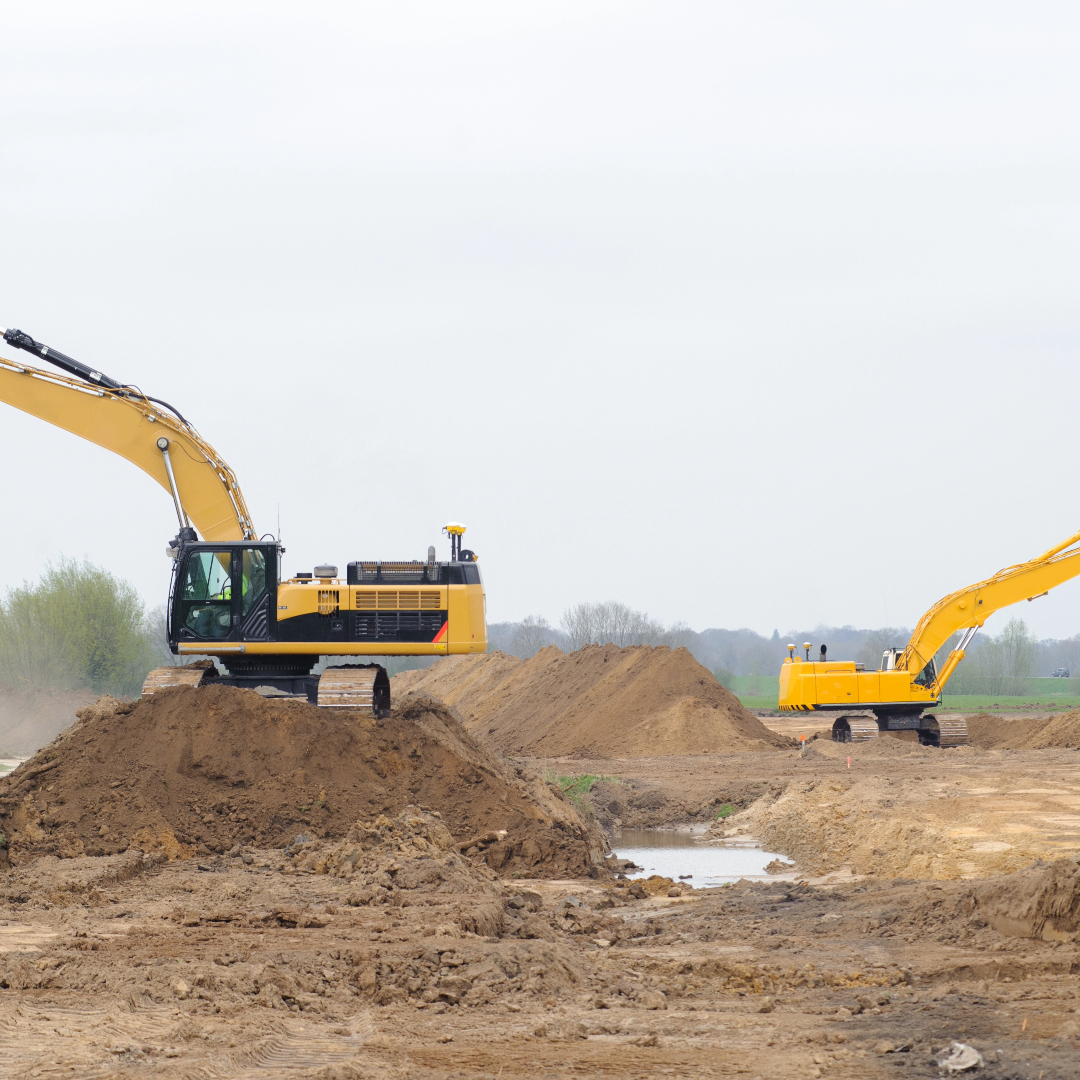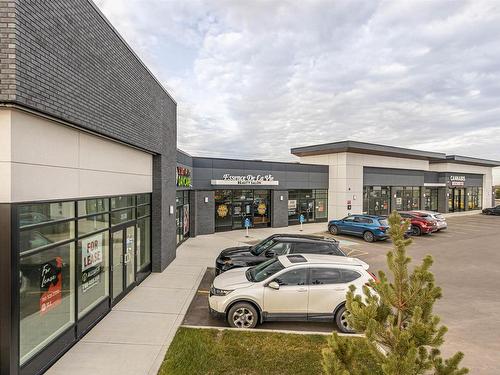When it comes to commercial construction projects, site work costs can make up a significant portion of the overall budget. From clearing the land to installing utilities and constructing retaining walls, there are many factors that contribute to the total cost of site work. In this guide, we will explore the various aspects of commercial site work costs and provide you with valuable insights to help you plan and budget for your next project. We will explore the different components that make up these costs and the factors that can affect them.
Understanding Commercial Site Work Costs
Commercial site work costs can vary greatly depending on the size and complexity of the project. It is important to have a clear understanding of the different components that contribute to these costs. Here are some key factors to consider:
1. Land Clearing and Grading
Before any construction can begin, the land needs to be cleared. This involves removing trees, rocks, and other obstacles, as well as the demolition of old buildings and leveling the ground to ensure a solid foundation. The cost of clearing can vary depending on the size of the site and the amount of vegetation and debris that needs to be cleared.
2. Excavation and Earthwork
Excavation and earthwork are necessary for creating a level surface for the construction of buildings and infrastructure. This includes digging trenches for utilities, creating building pads, and shaping the land to accommodate drainage systems. The cost of excavation and earthwork is determined by the volume of soil that needs to be moved and the complexity of the terrain.
Site Stripping
In addition to creating a level surface, excavation and earthwork also involve the removal of organics (a process known as site stripping) to create a suitable base for foundations, roadways, and other structures.
Cut and Fill
The cut and fill process refers to the cutting of clay from one location and moving it to another area to prepare site grades that match the design intent. The cost of this process can vary depending on the volume of material that needs to be moved, the distance in which the dump trucks need to travel, the type of clay and material that is required (import is more expensive if needed) and the difficulty of the work. For example, excavating in rocky or difficult terrain can be more expensive than in flat, easily accessible areas.
Grading
Grading is the process of smoothing and shaping the land in order to create an even surface. This is done to ensure that the building or infrastructure is not subject to uneven settling, which can lead to structural damage. The cost of grading can vary depending on the scope of the project, the size of the area that needs to be worked on, and the complexity of the terrain. For example, grading a large area with steep slopes can be more expensive than grading a flat site.
Aggregate Base
Aggregate is a fundamental aspect of the construction of our roads, highways, parking lots, municipal and private infrastructure. In fact it requires about 30,000 tons of aggregate to construct just one kilometer of highway in Alberta. Aggregate is an extracted resource made of crushed stone, gravel, sand, shale, gravel and rocks. To save project costs, it is better to source aggregate locally.
Paving
Paving asphalt is an important aspect of commercial site work. It involves the construction of a smooth and durable surface for roads, parking lots, and other infrastructure. The cost of paving asphalt can vary depending on factors such as the area to be paved, the thickness of the asphalt, and the quality of materials used. It is essential to consider these factors to ensure a long-lasting and cost-effective pavement.
Topsoil, Seeding and Sod Installation
Topsoil, Seeding and sod installation are necessary for landscaping the property. The cost of seeding and sod installation can vary depending on the size of the area that needs to be covered and the type of grass or seed used. Additionally, soil testing may be necessary in order to determine the best type of grass or seed for the area.
3. Utilities Installation
Installing utilities such as water, sewer, and electrical systems is a crucial part of commercial site work. The cost of utilities installation can vary depending on the distance from existing infrastructure, the depth of the trenches, and the type of materials used. It is important to work with experienced contractors who can accurately estimate these costs.
The installation of utilities is a complex process that requires careful planning and execution. The cost can be influenced by factors such as the type of utility being installed, the distance from existing infrastructure, and the materials used. For example, installing underground utilities may require more excavation and materials, increasing the cost.
4. Retaining Walls
Retaining walls are often required in commercial construction projects to prevent soil erosion and provide structural support. The cost of retaining walls can vary depending on the height, length, and materials used. Factors such as site conditions, accessibility, and engineering requirements can also impact the cost.
In addition to their functional role, retaining walls can also add aesthetic value to a site. The cost of constructing these walls can vary depending on the design, materials used, and the complexity of the construction. For example, a simple concrete retaining wall will likely be less expensive than one made of natural stone or brick.
5. Landscaping
Landscaping is often an overlooked aspect of commercial site work, but it can significantly impact the overall cost. This includes the cost of planting trees and shrubs, installing irrigation systems, and creating outdoor spaces. The cost of landscaping can vary depending on the size and complexity of the project, as well as the types of plants and materials used.

Factors Affecting Commercial Site Work Costs
Now that we have discussed the different components of commercial site work costs, let's explore some of the factors that can affect these costs:
1. Site Conditions
The condition of the site can greatly impact the cost of site work. Sites with rocky terrain or poor soil conditions may require additional excavation and earthwork, which can increase costs. Similarly, sites with existing structures or utilities may require more extensive demolition and relocation, adding to the overall expenses.
In addition to the physical conditions of the site, other factors such as the presence of endangered species, wetlands or drainage can also affect the cost. These factors may require additional permits and mitigation measures, which can add to the overall cost of site work.
2. Accessibility
The accessibility of the site can also affect costs. Sites that are difficult to access may require specialized equipment or additional labor, which can increase the overall project cost. It is important to consider the location and accessibility of the site when estimating site work costs.
Accessibility can also refer to the availability of utilities and other infrastructure. For example, a site that is far from existing utility lines may require more extensive work to connect to these services, increasing the cost.
3. Local Regulations and Permits
Commercial construction projects are subject to various local regulations and permits. These requirements can vary depending on the location and can impact the cost of site work. It is important to factor in the time and cost associated with obtaining permits and complying with regulations when budgeting for site work.
In addition to local regulations, there may also be provincial or federal regulations that apply to your project. These can include environmental regulations, building codes, and safety standards. It is important to research and understand these requirements before beginning your project to avoid unexpected costs and delays.
4. Material Costs
The cost of materials, such as concrete, steel, and drainage systems, can also impact the overall site work costs. It is important to research and compare prices from different suppliers to ensure you are getting the best value for your money. Working with experienced contractors can also help in optimizing material costs.
Material costs can also be influenced by factors such as the availability of materials and the cost of transportation. For example, if a specific type of stone is not locally available, it may need to be imported, which can add to the cost.
5. Labor Costs
Labor costs are another significant factor in commercial site work costs. These costs can vary depending on the complexity of the work, the skills required, and the local labor market. It is important to factor in labor costs when estimating site work costs to ensure an accurate budget.
Estimating Commercial Site Work Costs
Estimating commercial site work costs can be a complex process. However, with careful planning and accurate data, you can develop a reliable cost estimate for your project. Here are some steps to consider:
1. Site Survey and Analysis
Before estimating site work costs, it is important to conduct a thorough site survey and analysis. This involves assessing the site conditions, identifying any potential obstacles or challenges, and determining the scope of work required. A detailed site analysis will provide you with the necessary information to develop an accurate cost estimate.
A site survey and analysis should also include an assessment of the site's accessibility, the presence of any existing structures or utilities, and any environmental considerations. This information will help you understand the potential challenges and costs associated with the site.
2. Obtain Multiple Bids
To ensure you are getting a fair and competitive price, it is recommended to obtain multiple bids from reputable contractors. This will allow you to compare prices and evaluate the expertise and experience of different contractors. Be sure to provide each contractor with the same project specifications and requirements to ensure accurate and comparable bids.
When obtaining bids, it is also important to consider the contractor's reputation and experience. A contractor with a proven track record of delivering quality work on time and within budget can be a valuable asset to your project.
3. Consider Contingencies
When estimating site work costs, it is important to include contingencies for unforeseen circumstances or changes in the scope of work. This will help you account for any unexpected expenses that may arise during the construction process. It is recommended to include a contingency of at least 10% of the total estimated cost.
In addition to financial contingencies, it is also important to consider time contingencies. Construction projects often experience delays due to weather, unexpected site conditions, or changes in the project scope. Including a time contingency in your schedule can help ensure that your project stays on track.
4. Review and Refine
Once you have obtained bids and developed a cost estimate, it is important to review and refine the estimate based on feedback from contractors and any additional information or changes that may arise. This will help you develop a more accurate and reliable cost estimate for your commercial site work.
The review and refinement process should also include a reassessment of your project's scope and objectives. This can help you identify any areas where costs can be reduced or where additional investment may be necessary to achieve your project goals.
5. Monitor and Adjust
After your project has begun, it is important to continuously monitor and adjust your cost estimate as necessary. This involves tracking actual costs against your estimate and making adjustments as needed. Regular monitoring and adjustment can help you stay on budget and avoid unexpected costs.
The Path Forward
Commercial site work costs are a significant aspect of any construction project. By understanding the different components and factors that contribute to these costs, you can effectively plan and budget for your next project. Remember to conduct a thorough site analysis, obtain multiple bids, and include contingencies in your cost estimate. Working with experienced contractors and suppliers will also help in optimizing costs and ensuring a successful project. With careful planning and management, you can control your site work costs and achieve your project goals.
Bolson Engineering and Environmental Services is your partner in planning, with decades of experience in land development and a large construction network across Alberta. Contact us if you’re planning on a future development in Alberta, and we’ll be happy to consult with you as your trusted engineering partner.

